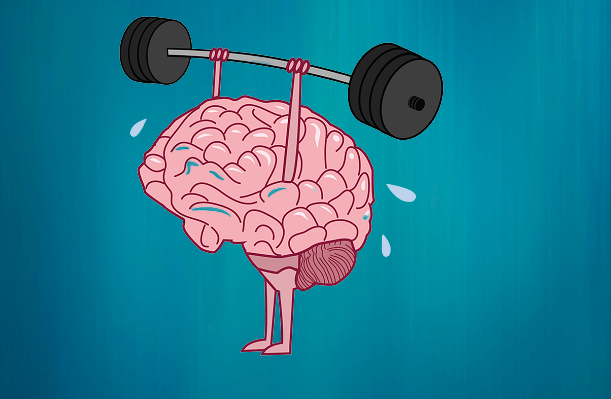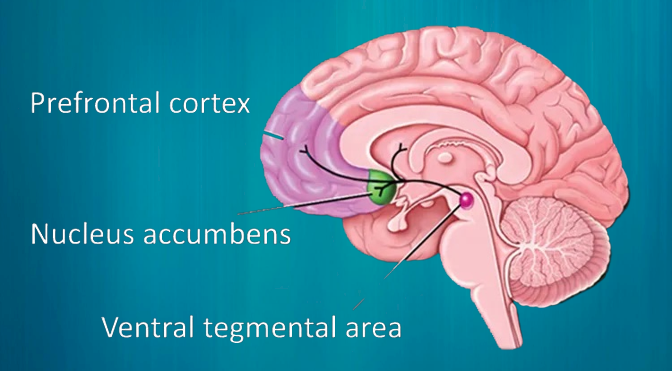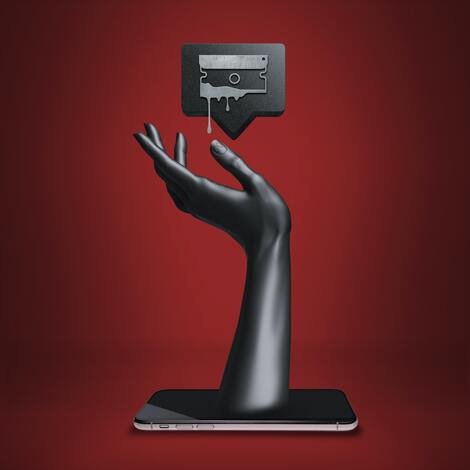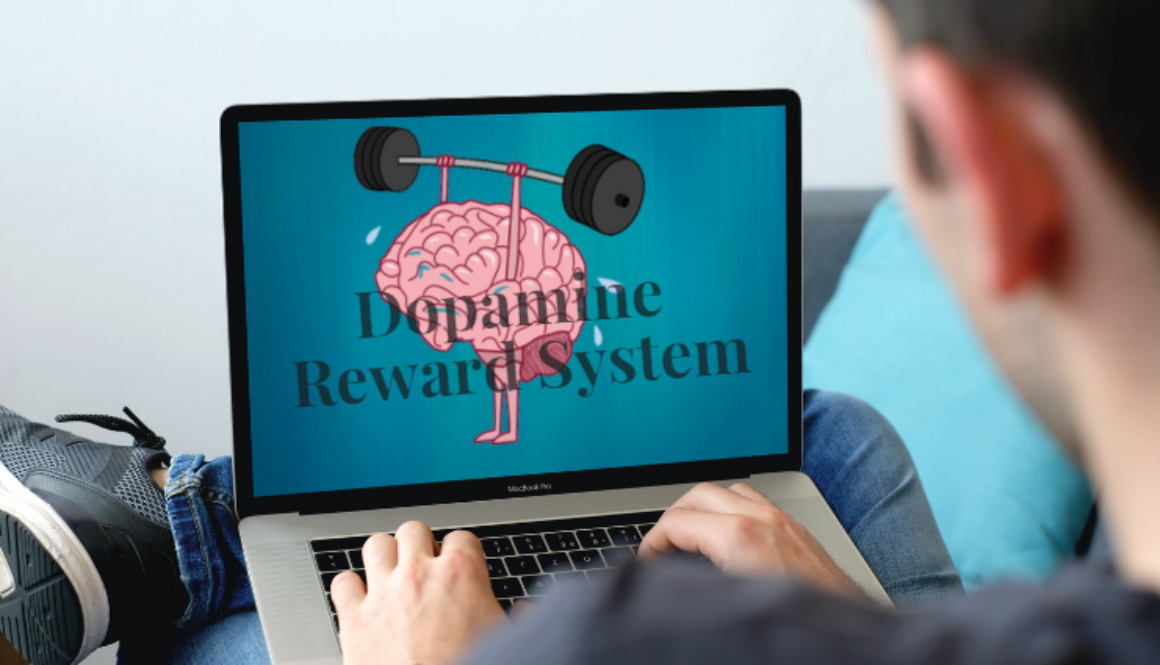Dopamine Reward System: The Motivation Basics You Need to Know
The dopamine reward system is the one thing you need to know about to understand why you do the things you do!
Introduction
The dopamine reward system is a complex yet essential part of the human brain that helps us process rewards and develop habits. It plays an important role in our physical health and affects how we think, feel, and behave.
We often only hear about the dangers of unchecked dopamine production, such as addiction or poor decision-making. But it’s much more than that -and understanding how this system works can help you make better choices for yourself and those around you.

In this blog post, we’ll explore the science behind the dopamine reward system so you can have a greater appreciation for why it matters to your health and happiness.
First Things First: “What is Dopamine?”
Dopamine is a neurotransmitter, or chemical messenger, responsible for transmitting signals between neurons in the brain. It helps regulate many functions, such as movement, pleasure-seeking behavior, attention, learning, and motivation. When certain pleasurable events occur, or we experience rewards from completing tasks or goals, our brains release dopamine to reinforce these experiences. [1]
The release of dopamine motivates us to repeat the same behaviors associated with the reward we received previously. This is known as reward-based learning, where dopamine reinforces certain behaviors or experiences. In other words, the dopamine release encourages us to repeat those same behaviors in hopes of receiving another reward. [2]
How It All Started
In the 1950s, two psychologists, James Olds, and Peter Milner experimented with the brain of rats. [3] They implanted electrodes in rats’ brains and when the rats were pulling a lever, a mild burst of electrical stimulation was being obtained. They noticed that certain areas, located within the medial forebrain bundle were repeatedly being stimulated and those are the reward areas. [4]
Researchers eventually realized that pleasurable brain stimulation activated dopamine neurons. According to their research, rats were less receptive to brain stimulation that did not entail dopamine activation. (!) [5]
What is the Dopamine Reward System?
The dopamine reward system is a complex network of neurons in the brain that are associated with pleasure, motivation, and reinforcement learning. It is responsible for producing the neurotransmitter dopamine, which serves as a signal to reinforce behavior and motivate us to repeat it in future scenarios. This reward system is essential to our ability to learn from experience and develop habits and behaviors over time. [1]
Scientifically Explained
At its core, the science behind the dopamine reward system centers around understanding how dopamine interacts with certain neurons in the brain, resulting in positive reinforcement for certain behaviors or experiences.
The release of dopamine creates a pleasurable feeling which encourages the repetition of behaviors or stimuli associated with that pleasurable feeling. The term “reward system” indicates rewarding stimuli that drive essential human behavior, including sleep, food, ignorance of pain, sex craving, and much more. [6]
Anything that leads a human being to learn, motivate, and experience pleasure could be a reward. Consequently, the reward system is a group of structures that assist our brain computes the worth of the reward and translating it into actions. [5]
Basically, what happens is that different regions of the brain have neurons that comprise the reward system which communicates using dopamine. So, the structures connected to the reward system are present along dopamine pathways in the brain.
Such different structures in the brain, are the ventral tegmental area (VTA), the nucleus accumbens (NAcc), and the prefrontal cortex. The VTA is a group of neurons located in the midbrain that produce dopamine and release it into the NAcc. The NAcc is a region of the brain that is associated with reward, motivation, and addiction. The prefrontal cortex is a higher-level area of the brain that is involved in decision-making, impulse control, and regulation of reward-seeking behavior. [7]

For instance, the mesolimbic dopamine pathway connects to the ventral tegmental area (VTA). This is one of the central dopamine-producing areas in the brain. These dopamine-producing neurons in the VTA of the brain communicate with the nucleus accumbens. The nucleus accumbens is an area in the ventral striatum that strongly connects with reward and motivation. [7]
In Other Words
The reward system simply helps to motivate us to do things. For instance, if someone offers you $500 to return their missing pet home, you are more likely to do so. Or, if your parents offer you a cell phone as a reward for getting good grades, you’re more likely to achieve higher marks. Similarly, our brains have their own reward system that rewards us by giving us pleasurable feelings.
The brain loves dopamine because it contributes to feelings of pleasure and satisfaction. As a result, we crave dopamine and usually, this is the reason we do the things that we do.
People crave sex, junk food, likes on social media, and new achievements all because of the dopamine reward.

However, as we mentioned in a previous article, dopamine is not only the molecule of pleasure but also the molecule of more. The best way to understand this statement is to do a little experiment. Observe yourself when you eat a bar of chocolate. You like that little piece of chocolate, but this is not the case. You are not just enjoying that little piece of chocolate, but you are, also, feeling that you want more of this! The main feeling you have is not the enjoyment of the chocolate’s taste BUT the feeling that you want MORE chocolate!
To put it differently, we produce a little dopamine with the achievement of a goal, and so we want more.
Consider this: why do people take drugs? Or why do they smoke heavily? It’s because of dopamine release; they find pleasure in doing so. Drugs activate the reward system in our brains which produces dopamine. The urge to get pleasure and reward leads people to take drugs again and again. At the end of the day, a person gets addicted to drugs because once you are addicted to any reward, it’s hard to live without it. [8]
Implications for Human Behavior
Integration of Learned Behaviors
Operant conditioning is a type of learning where rewards or punishments from our environment modify behavior. This type of learning aims to shape and modify behavior through reinforcement or punishment to reach desired outcomes. For example, an animal may be rewarded for completing a task correctly with food (positive reinforcement) while being punished for wrong answers with an electric shock (negative reinforcement). [9]
By reinforcing behaviors and experiences with dopamine, we also strengthen the pathways in our brain associated with those tasks or goals. This strengthens the connections between neurons in our brains, which helps us pay attention to certain things and remember information better. Furthermore, it can help improve our problem-solving skills and decision-making abilities since reward-based learning through the dopamine reward system encourages us to form beneficial and efficient habits for completing certain tasks. [9]
Role in Addiction and Compulsive Behaviors
The dopamine reward system is also involved in addiction. The release of dopamine associated with certain activities can cause people to become dependent on them, leading to addiction or compulsive behaviors.
Drugs of abuse, such as cocaine and methamphetamine, increase dopamine release in the nucleus accumbens (NAcc), leading to a state of hyperstimulation and intense pleasure. This hyperstimulation is so pleasurable that the brain becomes addicted to the drugs and the individual begins to seek out the drugs compulsively, even in the face of negative consequences. Over time, the repeated use of drugs of abuse can result in changes in the dopamine reward system that lead to a decrease in the ability of the system to produce pleasurable feelings in response to natural rewards. This leads to a person becoming addicted by constantly seeking this pleasure repeatedly. [6]
Role in Mental Health and Well-being
Research suggests that individuals with mental health conditions such as depression or anxiety may have an impaired dopamine reward system due to imbalanced neurotransmitters in the brain. This can lead to decreased motivation, difficulty concentrating, difficulty making decisions, lack of interest in pleasurable activities, and other symptoms associated with mental health conditions. [9]

Social Implications of Dopamine Production and Reward System
The dopamine reward system is also linked to a person’s social behavior, such as forming relationships or pursuing socially beneficial goals for their well-being. People may be more likely to engage in activities associated with rewards if it results in positive reinforcement from society. For example, someone may focus on achieving certain career goals because the recognition they receive from peers and colleagues reinforces the behaviors associated with those goals. [2]
Takeaway
Dopamine is a pleasurable neurotransmitter, yet the responses vary from person to person. It is highly associated with the reward system that boosts human motivation and reward behavior. However, it is necessary to keep the reward system balanced. Otherwise, it can lead to psychiatric disorders, including depression, schizophrenia, and bipolar disorders. [10]
Therefore, the dopamine reward system works and motivates us to perform well while it is in a balanced state. The dopamine reward system is a key player in the brain’s reward pathway and is responsible for generating feelings of pleasure and satisfaction in response to rewarding stimuli. Usually, it is the main reason that we do the things we do. Dopamine plays a role in mediating the incentive salience of rewards and modulates the motivational worth of pleasurable sensations.
The dopamine reward system also plays a role in learning and memory. When a rewarding stimulus is encountered, the increased dopamine activity strengthens the connections between the neurons that are involved in the behavior, making it more likely that the behavior will be repeated in the future. In addition, the dopamine reward system is involved in forming habits, which are repeated behaviors performed automatically without conscious thought.
But, one of the most important functions of the dopamine reward system is to regulate motivation. Dopamine is involved in the regulation of goal-directed behavior and helps to maintain a drive to engage in behaviors that are associated with rewards. It is now obvious, dopamine release in response to a rewarding stimulus can increase motivation to pursue the reward, and the lack of dopamine release in response to an unrewarding stimulus can decrease motivation to pursue the reward.

To summarize, the dopamine reward system is an essential part of the brain that helps to regulate our emotions and motivations. This system is responsible for the pleasurable feelings we experience when we achieve a goal or receive a reward. By understanding how the dopamine reward system works, we can better understand addiction, anxiety, and depression. We can also learn ways to improve our mental health by using techniques that positively activate this system.
Can we fool our brains and allow us to use the dopamine reward system to our advantage? We will find out soon and share it with you. Until then, stay informed, find out our book recommendations, and take care of your mind!!
Dopamine Nation
But if you want to learn how dopamine rules our life there is no better way than Dr. Anna Lembke’s book.

Find our brief summary of the book HERE.
References
- Arias-Carrión O;Pŏppel E. (2013). Dopamine, learning, and reward-seeking behavior. Acta Neurobiologiae Experimentalis.
- Juárez Olguín, H., et al. (2016). The Role of Dopamine and Its Dysfunction as a Consequence of Oxidative Stress. Oxidative Medicine and Cellular Longevity.
- Olds, J., and Milner, P. “Positive Reinforcement Produced by Electrical Stimulation of Septal Area and Other Regions of Rat Brain.”
- De Haan, H.J. “Origins and import of reinforcing self-stimulation of the brain.”
- Kasanova, Z., Ceccarini, J., Frank, M.J., et al. “Striatal dopaminergic modulation of reinforcement learning predicts reward-oriented behavior in daily life.”
- Baik, J.-H. (2020). Stress and the dopaminergic reward system. Experimental & Molecular Medicine.
- Buckholtz, J.W., Treadway, M.T., Cowan, R.L., et al. “Mesolimbic dopamine reward system hypersensitivity in individuals with psychopathic traits.”
- Teicher, M.H., Samson, J.A., Anderson, C.M., and Ohashi, K. “The effects of childhood maltreatment on brain structure, function and connectivity.”
- Arias-Carrión, et al. (2010). Dopaminergic reward system: a short integrative review. International Archives of Medicine
- Arnsten, A.F.T., and Rubia, K. “Neurobiological circuits regulating attention, cognitive control, motivation, and emotion: Disruptions in neurodevelopmental psychiatric disorders.”

